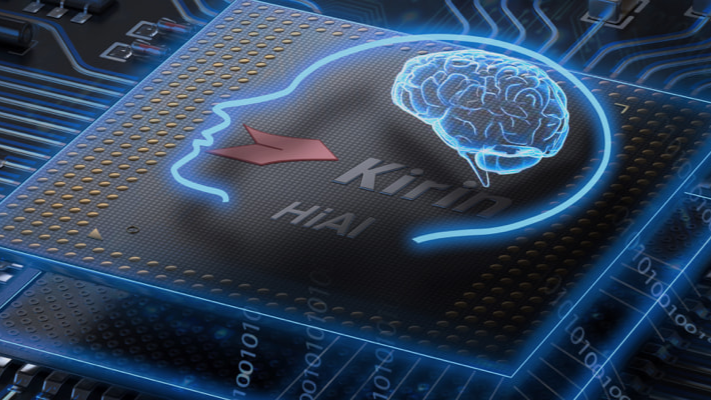Huawei sticks to 7nm for latest processor as China's chip advancements stall

Last year, Huawei and SMIC made quite a breakthrough with the 7nm-class HiSilicon Kirin 9000S processor which powers Huawei's Mate 60 Pro smartphone. However, this year's Mate 70 Pro handset and its system-on-chip demonstrate limited progress in semiconductor manufacturing in China, as the processor continues to use a 7nm-class process technology reports Bloomberg citing TechInsights. While this may not be a problem for a smartphone, the slow semiconductor progress will likely become an issue for Huawei's AI processors.
Still 7nm
The Huawei Mate 70 Pro is based on the HiSilicon Kirin 9020 processor manufactured by SMIC using its 2nd Generation 7nm-class process technology (also known as N+2). The Kirin 9020 is an enhanced version of its predecessor, with a 15% larger die size (136.6mm2) and a modified layout, aimed at boosting performance and power efficiency. It retains design elements like the 'Hi36C0' and 'GFCV110' packaging markings while adding unique identifiers such as 'WH231203' on the die, which may suggest that this is a revamped version of the previous-generation architecture, not something brand new.
Given the fact that Huawei used to make the original HiSilicon Kirin 9000 processor on TSMC's EUV-enabled N7+ node, that 2020 chip may still have an edge over the 2024 application processor in certain areas.
TechInsights expected Huawei to use its HiSilicon Kirin 9100 processor made on its 5nm-class fabrication process for its new flagship smartphone. However, the company decided to be conservative and continues to use its N+2 instead of N+3 (which is believed to be a 6nm-class production node) or a 5nm-class manufacturing technology.
Without any doubt, the very fact that SMIC can still make chips using its 2nd Generation 7nm-class process in high volume demonstrates that it can do so despite extensive restrictions. However, the lack of significant progress indicates that the pace of SMIC's innovations is slowing down.
SMIC's pace of innovation is slowing down
Huawei had been rumored to be developing a 5nm processor for release this year, according to Bloomberg and TechInsights. However, its reliance on SMIC, which lacks access to advanced lithography tools from ASML due to export restrictions, has stalled progress. As a result, Huawei is unlikely to achieve 5nm production before 2026 (assuming that N+3 will be adopted in 2025), Bloomberg claims.
By that time, TSMC will be ready with its 2nd Generation 2nm-class fabrication technology called N2P with gate-all-around (GAA) nanosheet transistors, as well as with its all-new A16 production node with GAA transistors and backside power delivery network. Essentially, this means that TSMC will be three to four generations ahead of SMIC.
Get Tom's Hardware's best news and in-depth reviews, straight to your inbox.
Big problem for AI
For now, Huawei can make its Huawei Mate 70 Pro smartphone based on the Kirin 9020 processor competitive as the SoC delivers decent performance for a handset. However, limitations imposed by SMIC's slow progress with process technologies will play a bigger role in Huawei's Ascend 900-series processors for AI.
The company's next-generation HiSilicon Ascend 910C is projected to rely on SMIC's N+3 node (6nm-class). That processor is expected to be available in 2025 and given the limited advantages of 6nm nodes over 7nm nodes, it is not expected to be significantly faster than the Ascend 910B, which is a simplified version of the Ascend 910 released in 2020 to compete against Nvidia's A100. As a consequence, Huawei's AI capabilities on the processor level will be two generations behind those of Nvidia in 2025, which will ramp up its Blackwell-series processors next year.
Of course, Huawei could try and build enormous AI datacenters using hundreds of thousands or millions of Ascend 910-series processors that it will have in 2025 and train large language models that will be competitive against those trained in the U.S. But for how long Huawei could be competitive this way?

Anton Shilov is a contributing writer at Tom’s Hardware. Over the past couple of decades, he has covered everything from CPUs and GPUs to supercomputers and from modern process technologies and latest fab tools to high-tech industry trends.
-
phead128 What's the benchmark of the new chip? Process node isn't end all be all, there is still other ways to optimize the design to squeeze more performance.Reply -
pug_s Huawei can probably improve yields if they separate the 5g modem chip off from the main cpu soc. All of the apple phones are like this.Reply -
IBM296 Reply
Yup... I think by 2030 some company in China will have made an EUV machine, enabling Huawei to go directly to 3nm and 2nm.Royk123 said:I hate to say this but necessity breeds innovation -
thth Reply
Benchmarks easily beat Samsung 4nm chips like Google Tensor G4 and is similar to Snapdragon 8 Plus Gen 1, which is TSMC 4nmphead128 said:What's the benchmark of the new chip? Process node isn't end all be all, there is still other ways to optimize the design to squeeze more performance. -
bit_user Reply
Which benchmarks?thth said:Benchmarks easily beat Samsung 4nm chips like Google Tensor G4 and is similar to Snapdragon 8 Plus Gen 1, which is TSMC 4nm
Google doesn't pack much graphics horsepower in their Tensor G SoCs. They also claim the G4 was optimized for efficiency, which is backed up by the fact that it has only one X4 core, three A720's, and four A520's. More importantly, it has lower peak clock speeds than its competitors. So, I think it shouldn't actually be that hard to beat the G4 on raw performance, especially if you just pack more P-cores and clock them higher.
By comparison, the Snapdragon 8+ Gen 1 has 2-year older X2 + A710 + A510 cores, but clocks them higher (up to 3.2 GHz). Again, probably not hard to beat, if you're packing like four X1 + four A78 cores and running at clock speeds in the same ballpark.